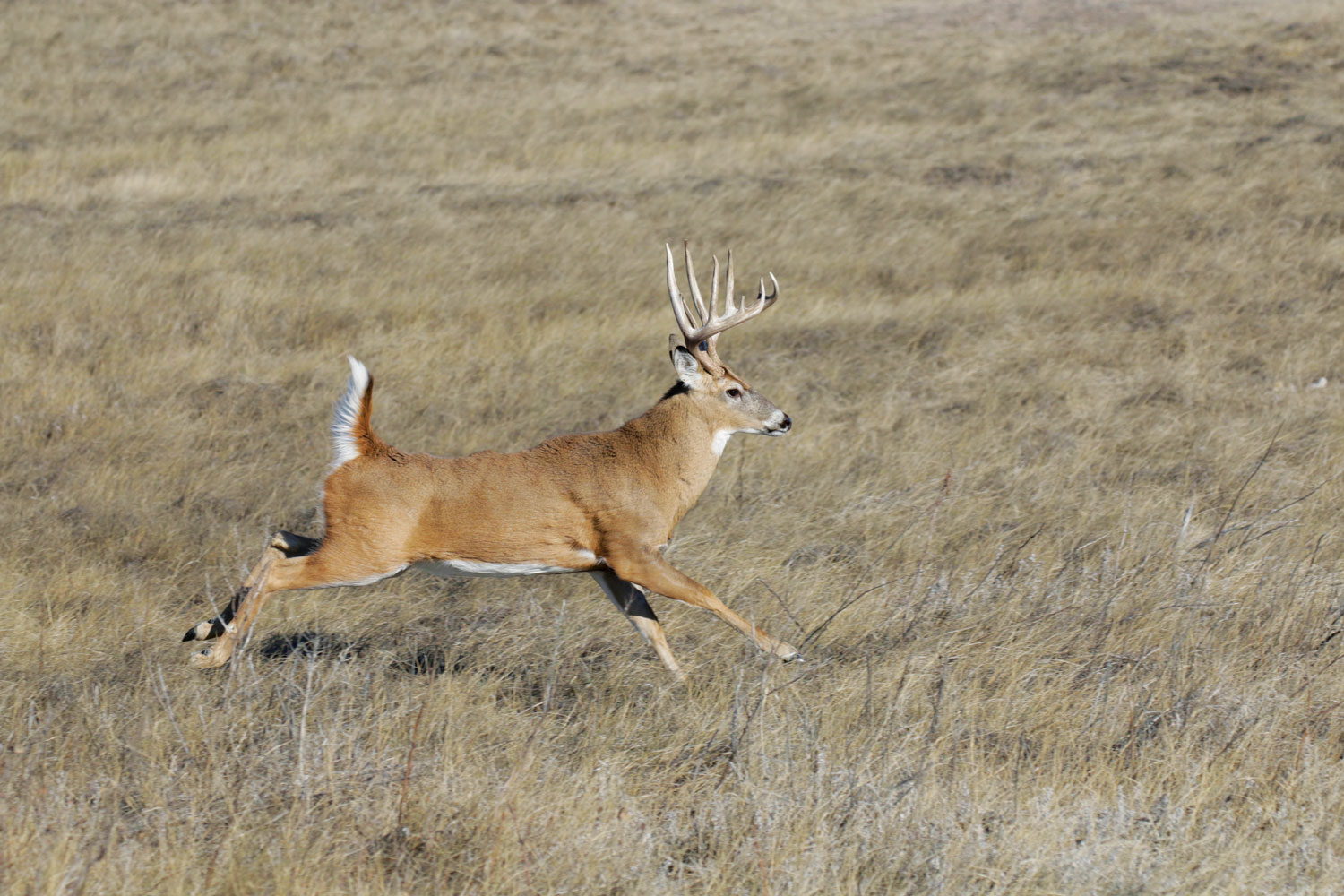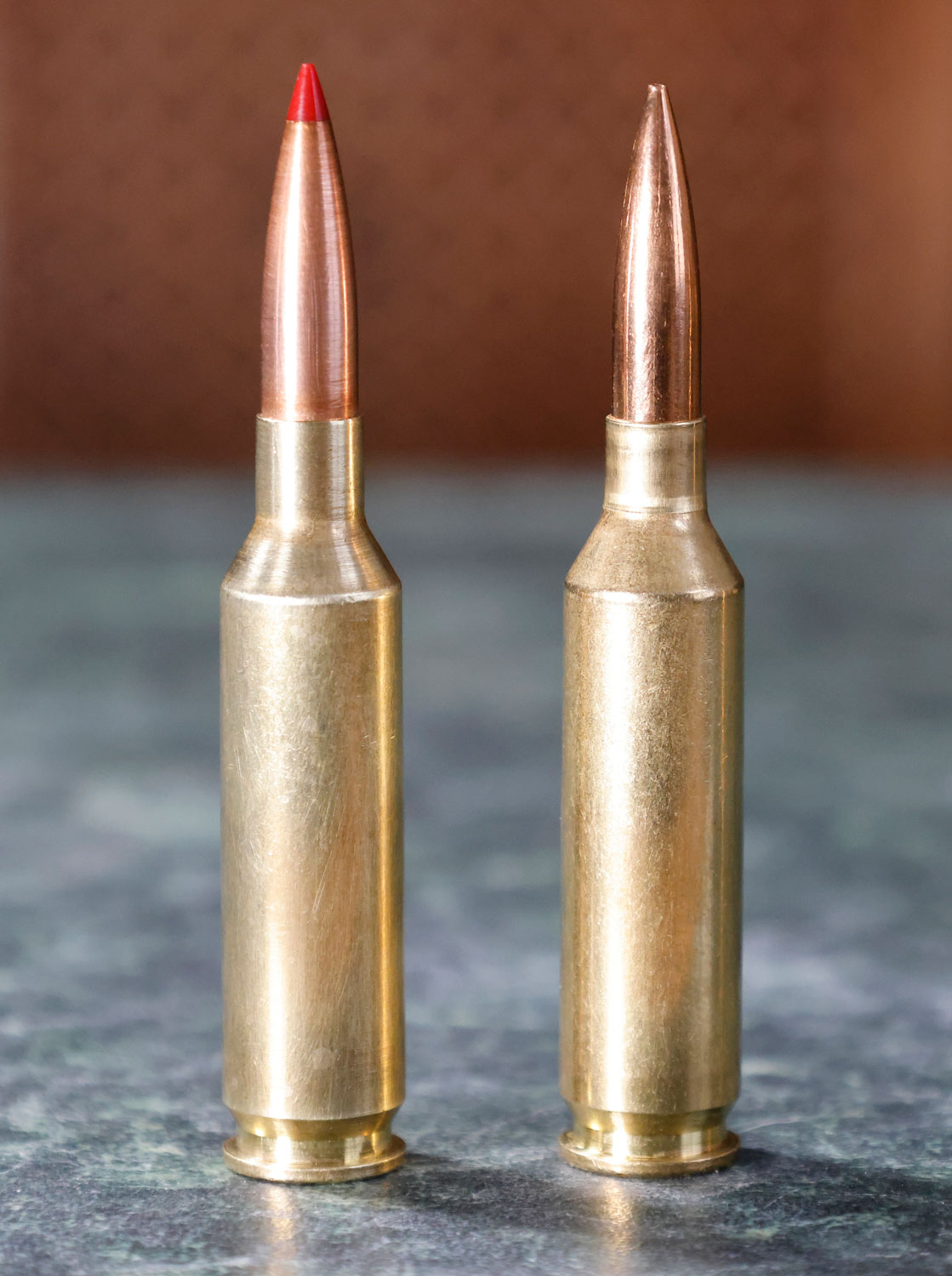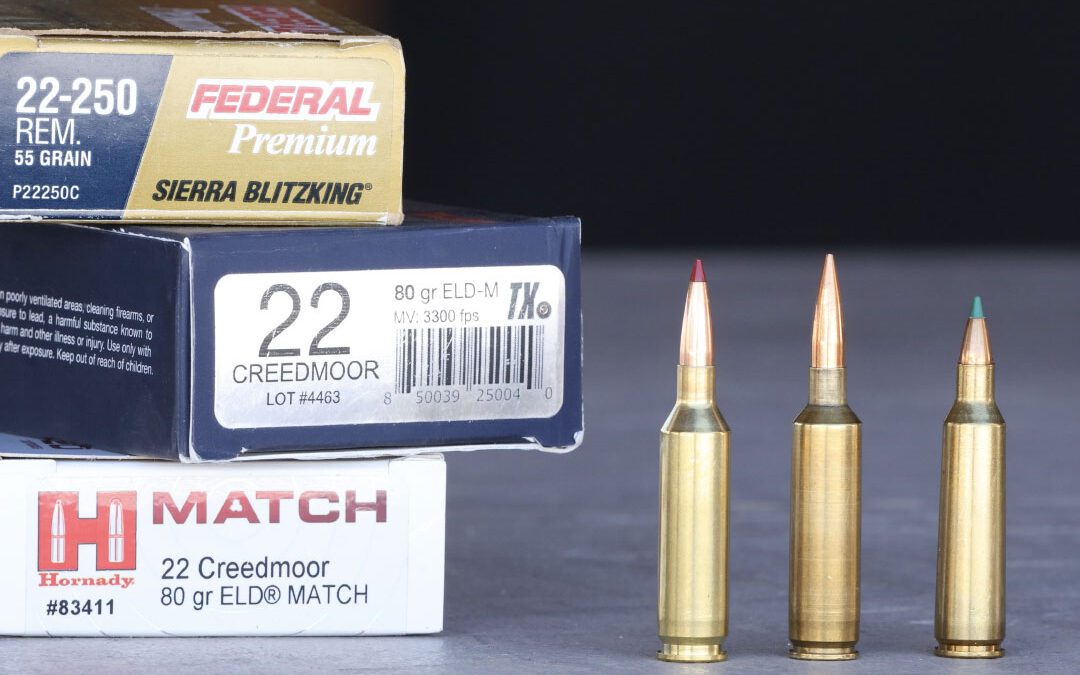Debating the merits of “deer cartridges” has heated as many hunting cabins as have potbellied stoves. Most such disputations are ignited by calibers from 24 through 35, but if you want a barn burner of a conflagration, toss a 22 centerfire onto the embers. In the imaginations of most hunters, a 22-caliber—any 22-caliber centerfire—is one notch above the poacher’s 22 Rimfire and has no place in our sport hunting arsenal.
The 22 Creedmoor challenges that.
Oh yes, we have been blessed by not only another new cartridge, but another with the controversial Creed farm in its title. If the 6.5mm Creedmoor has raised hell, what will this 5.56mm version raise? Or, more importantly, what will it drop?

Will the 22 Creedmoor prove adequate for taking big whitetails? In a race between a buck like this and the new 22 Creedmooor, the author is betting on the Creedmoor.
Before we investigate the 22 Creedmoor as a deer round, let’s give its creators some cover. I’ve no evidence any wildcatter set out to engineer a “deer cartridge.” Texan wildcatter Derrick Ratliff says he necked-down the 6.5 Creedmoor case in search of long-range coyote medicine. His experiment follows in the century-old tradition of necked down cases. Just as Grosvenor Wotkyns and J.E. Gebby choked down the 250-3000 Savage in 1935 to fashion the 22 Varminter (which Remington commercialized as the 22-250 in 1965,) so did Ratliff modify the 6.5 Creedmoor in 2013.
Skip ahead a decade and here we are, scratching our heads over a SAAMI approved, short-action case pushing an 80-grain bullet 3,300 fps through a 1:8-inch twist barrel. That produces 1,935 foot-pounds of energy at the muzzle and retains 1,000 foot-pounds clear out at 475 yards. For perspective, a 170-grain Nosler Partition from a 30-30 Winchester kicks up 1,830 foot-pounds at the muzzle and clings to just 1,000 of those at 200 yards.
Those numbers, of course, don’t take into account bullet diameter, weight and momentum, which is where these deer cartridge conversations usually go. Can energy delivered at high velocity compete with mass and momentum?
According to the thousands who have brought whitetails to the deer pole at the invitation of 223 Remingtons, 22-250 Remingtons and 220 Swifts, the answer is “yes.”
“My daughter has dropped a baker’s dozen whitetails with as many shots from her little 223. One shot behind the shoulder and they drop where they stood or dash no more than 50 yards before piling up.”
“The 22-250 is a fine round for deer. Mine heart or lung shot have never gone more than 30 yards.”
“My uncle shot all his deer with a 22 Hornet. Never lost any.”
“I hunt with a 5.56. No complaints from the deer.”
“Shoot most of my red deer with 223. Not lost one yet.”
“I’ve taken all my mule deer with a 223. No recoil and easy to put in the sweet spot.”
And more of the same. No recoil. Precision shot placement. Dead deer.
Some chalk this up to dumb luck if not divine intervention, but the claims are too strong and too many for either to be true. Twenty-two caliber centerfire big game success has been celebrated ever since the 22 Hornet debuted in 1932. Only three years later it reached its zenith with Winchester’s 220 Swift, for 70 years the fastest commercial cartridge at a hunter’s disposal, a veritable lightening bolt that, according to at least one professional culler targeting feral burros in the Grand Canyon, killed more reliably and decisively than the 30-40 Krag, 30-06 or 8mm Mauser. Regardless, the Swift continues its slow slide to obsolescence. Will the 22 Creedmoor now accelerate to the top spot?
Arguing for the 22 Creedmoor are its similarities to the 243 Winchester, a proven deer killer.
Zero an 80-grain .243 boattail (B.C. .329) 2.4 inches high at 100 yards and launch it 3,400 fps. Zero an 80-grain .224 bullet (B.C. .485) 2.4 inches high at 100 yards and send it 3,300 fps. Neither bullet will rise more than 3 inches above line-of-sight. At 400 yards the .243 bullet will drop 1.25 inches more than the .224 bullet. Big deal. But in a 10-mph right angle wind, the .243 deflects about 5 inches more. In addition, it will be carrying 213 foot-pounds LESS energy.

Wildcatting the 6.5 Creedmooor to fire a .224-inch bullet seems a no-brainer. Just neck it down, load it up with a long, heavy, high B.C. bullet in a 1:8-inch twist barrel and leap to the top of the 22 centerfire heap.
For our further edification, we should appreciate what a higher B.C. bullet can do at more extreme distances. At 800 yards (we are not advocating anyone target game animals at such a distance, but steel plates are fair and fun game) our 22 Creedmoor bullet drops 29 inches less than the .243, deflects 28 inches less and retains 260 foot-pounds more energy.
But that’s not the whole story. A bullet’s sectional density (cross sectional area) is used to judge its relative (to construction and materials) penetration potential. The higher the SD, the better the potential to penetrate. The skinnier .224 bullet’s SD is .228. The 80-grain .243 bullet’s SD is just .194.
Before we get overwhelmed by numbers, let’s add this up. We’re tossing an admittedly light (for deer hunting) bullet at animals for which adequate killing power is suggested to be at least 1,000 foot-pounds. The 22 Creedmoor delivers this to 480 yards while the 243 Winchester carries it to just 355 yards. Even at 100 yards, the 22 Creedmoor bullet retains a smidge more energy, drops an inch less, deflects 5 inches less and has higher sectional density.
Will all this make the 22 Creedmoor equal to the 243 Winchester in the field? Or better? Time will tell. But analyzing the physics has certainly proven to be an education in ballistics.
As hunters we might entertain the 22 Creedmoor as a viable deer round, merely a varmint round, or perhaps an open-country cartridge for pronghorn and the smaller African antelope. Maybe we should limit it to steel plates. The call is ours. We know that it is out there. We understand its ballistic performance. Recoil in an 8-pound rifle should be about 9 foot-pounds, easy for even the recoil sensitive to handle. Young shooters, small-framed shooters, hunters with physical challenges that limit recoil tolerance might want to consider a 22 Creedmoor, the highest-performing, commercial 22 centerfire on the market.
Throw another log on the fire and let the debate warm the cabin.
The Creedmoor Rifle Range
The Creedmoor Rifle Range was established by the National Rifle Association in conjunction with the New York legislature way back in 1873. Farmer Bernardus Creed sold 70 acres of his Long Island moorlands so a 1,000-yard range could be established for the training of American riflemen. Mr. Creed’s moor hosted the first international long-range competition in which the Americans won against the Irish rifle team. In recognition, the Creedmoor name was soon attached to the 44-90, 44-100 and 44-110 Remington Creedmoor cartridges as well as the No. 3 Long Range Creedmoor rifle built to fire them. The Creedmoor name may be a 21st century burr under the saddle of many shooters, but it has a strong and honorable pedigree.
This article originally appeared in the 2024 May/June issue of Sporting Classics.

